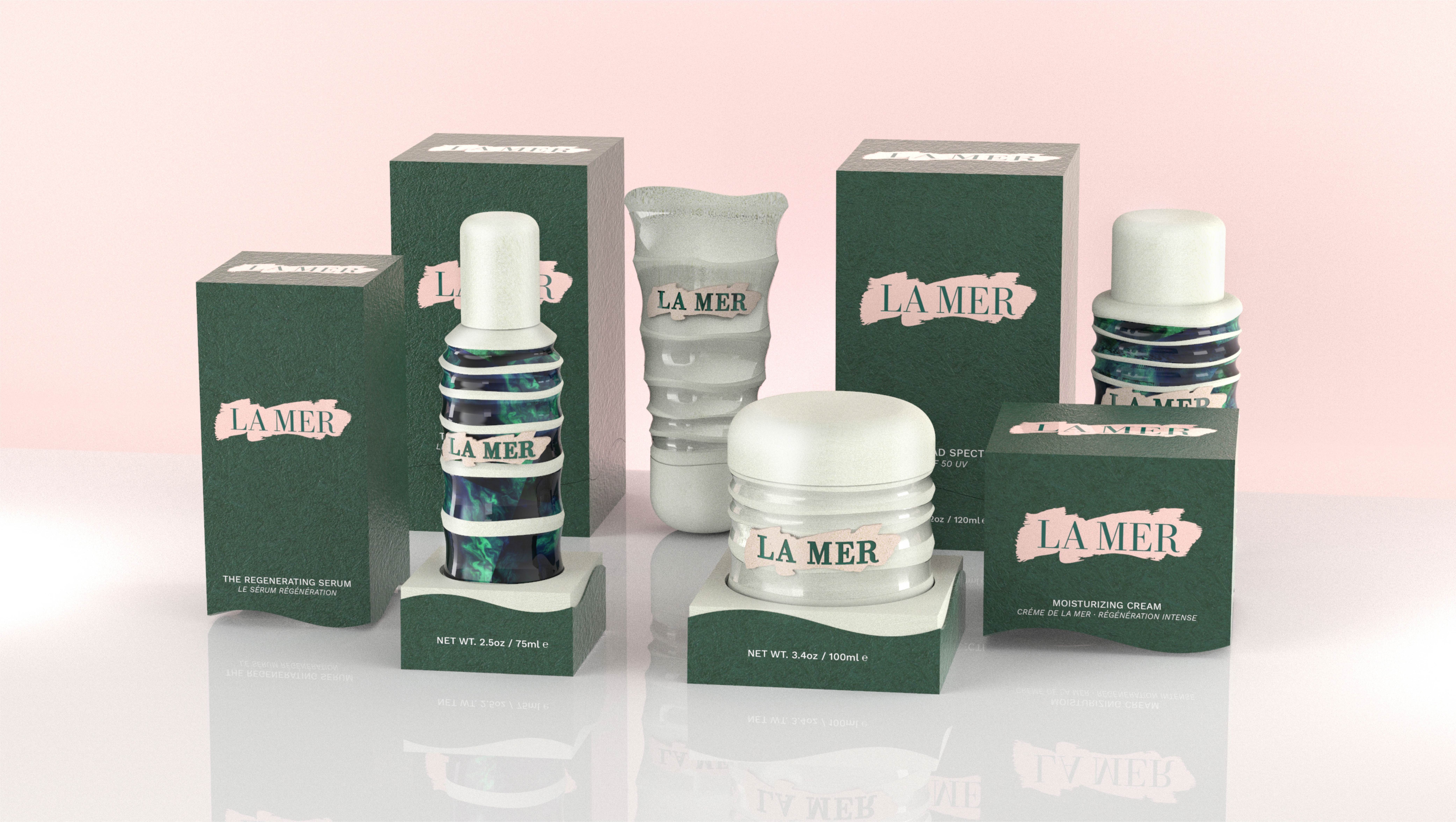Transmuting Luxury Packaging For a Sustainable Future
Silvia Lambarri Mestres
This project focuses on exploring bio-materials as a sustainable option that is appropriate and accepted for luxury packaging for the beauty industry while also dramatically reducing packaging waste and its negative impact on our environment. As the European Commission aims to make all packaging placed on the EU market reusable or recyclable by 2030, I wanted to help La Mer, an ocean-inspired luxury skincare brand, to rethink their packaging materials.
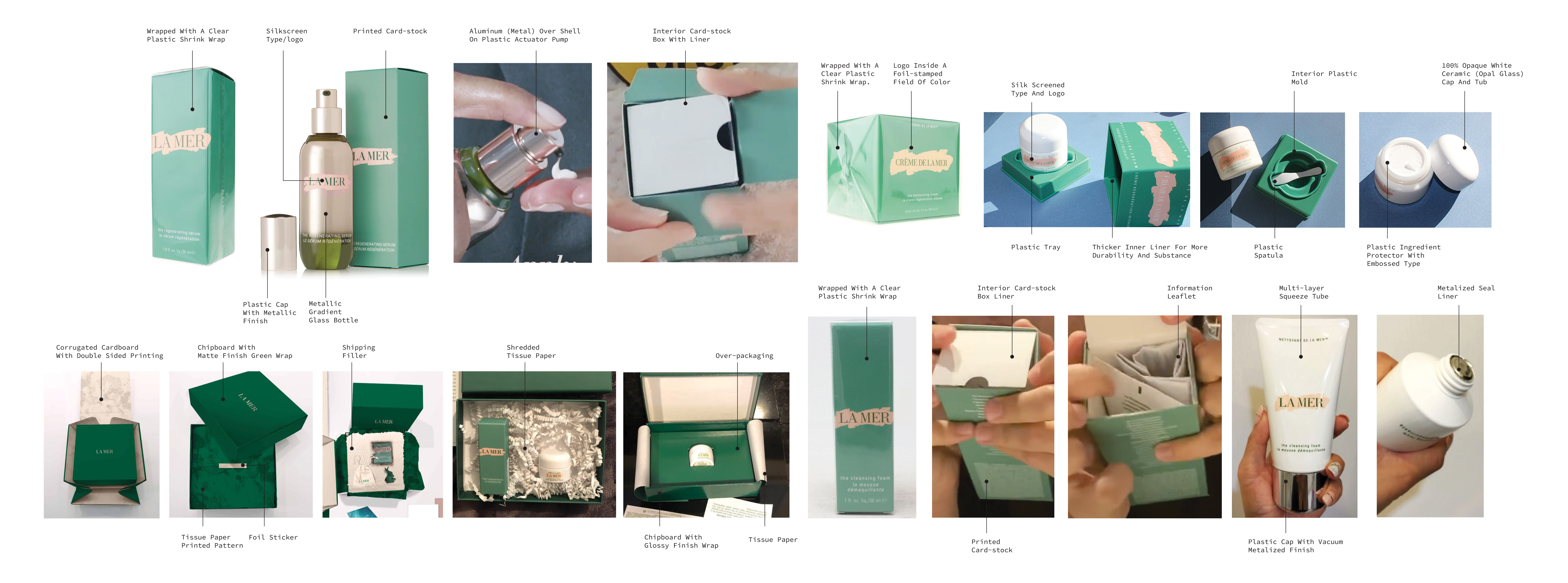
Brand Analysis
After analyzing all parts of La Mer’s packaging, I found that their current packaging is not recyclable, sustainable, or reusable, due to different materials used, manufacturing processes, and printing techniques.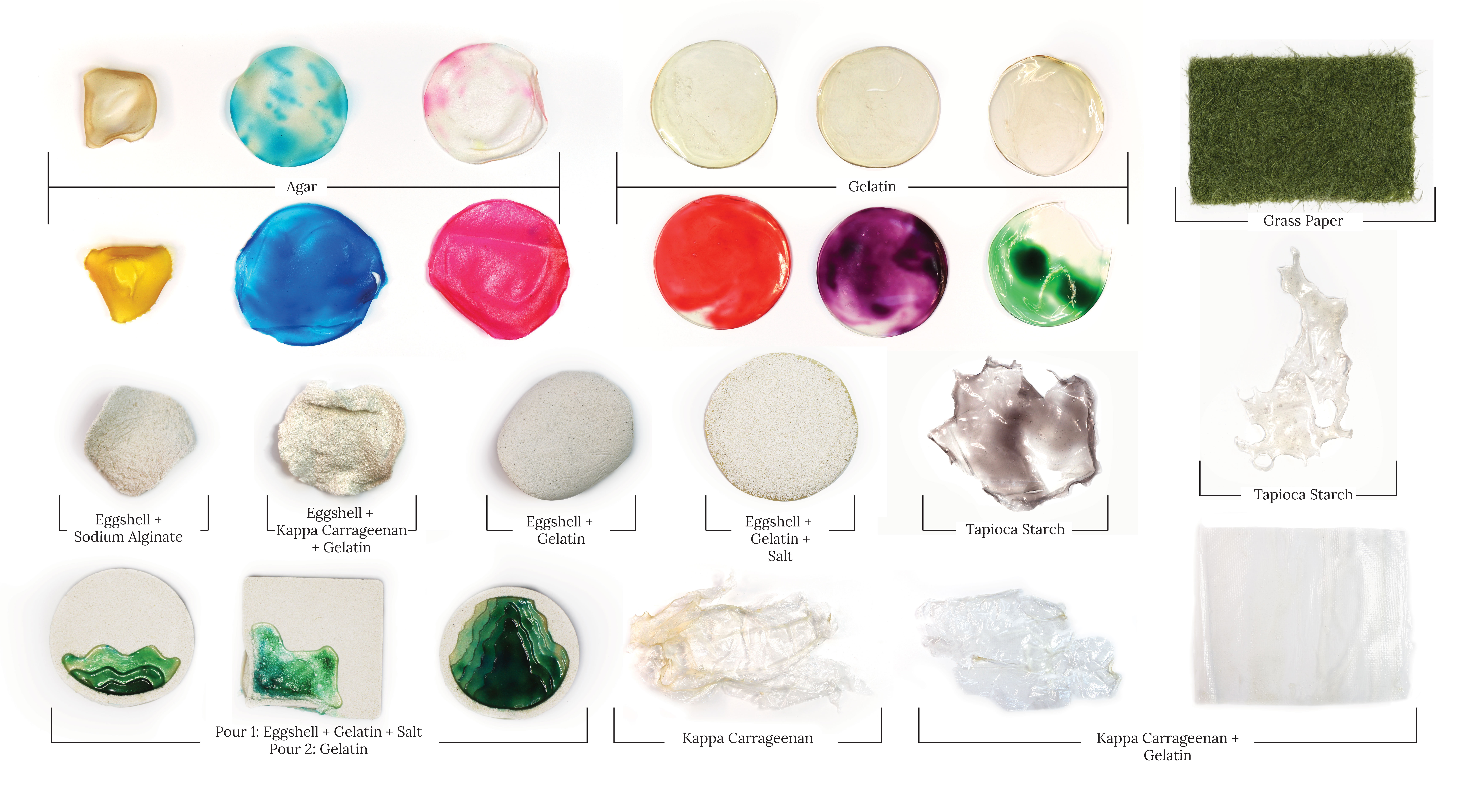
Bio-Material Experiments
Experimenting with different ingredients to produce biomaterials with suitable properties that could be applied to develop primary and secondary packaging structures. I found great value in getting deep into material science and learning how bio-materials can be formed and come together.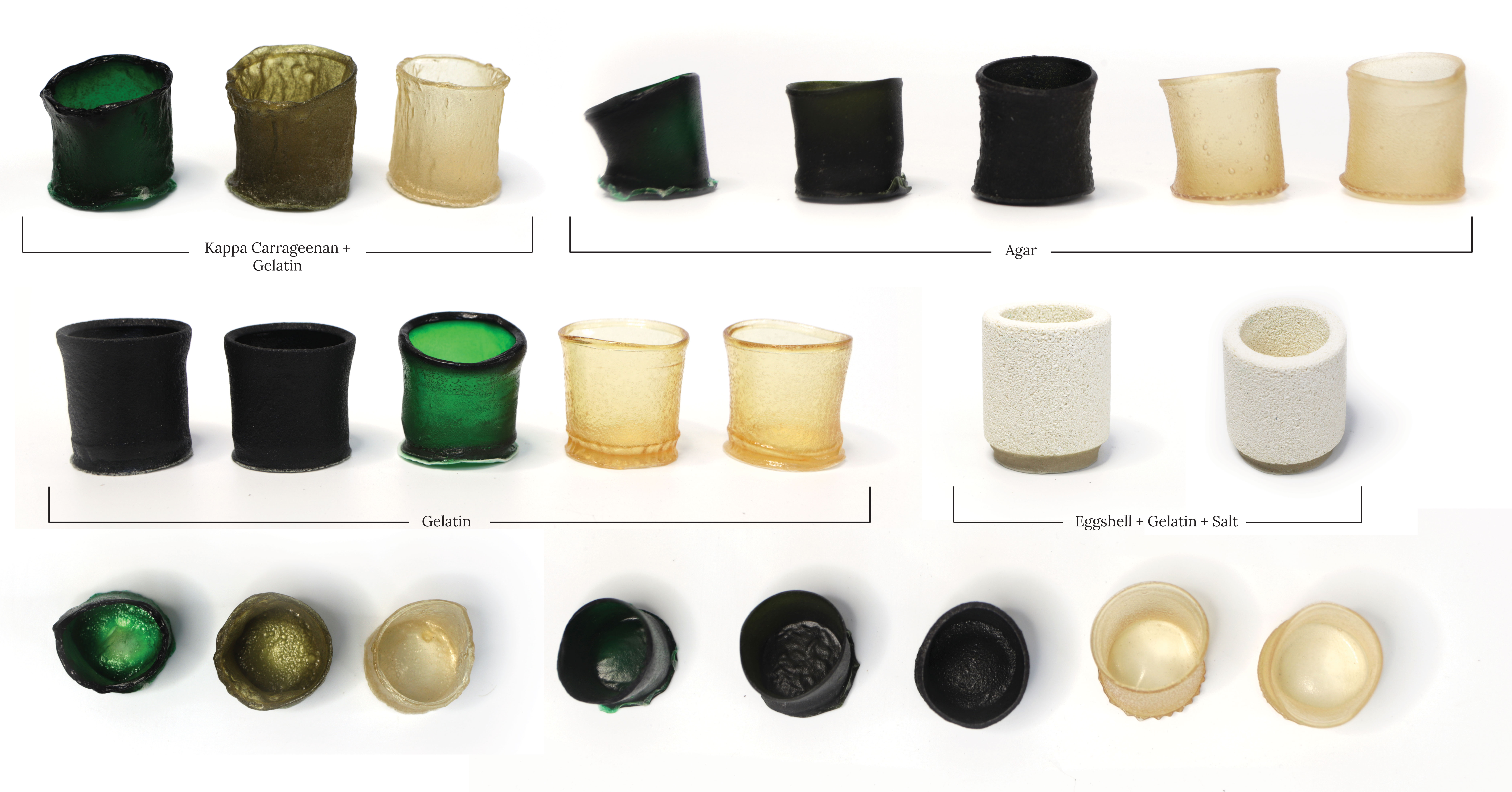
Bio-Material Cups
By producing cup structures with bio-materials, I gained a deeper appreciation of something I never knew about and learned about the forms that bio-materials are naturally willing to take, rather than forms that they need to be forced into.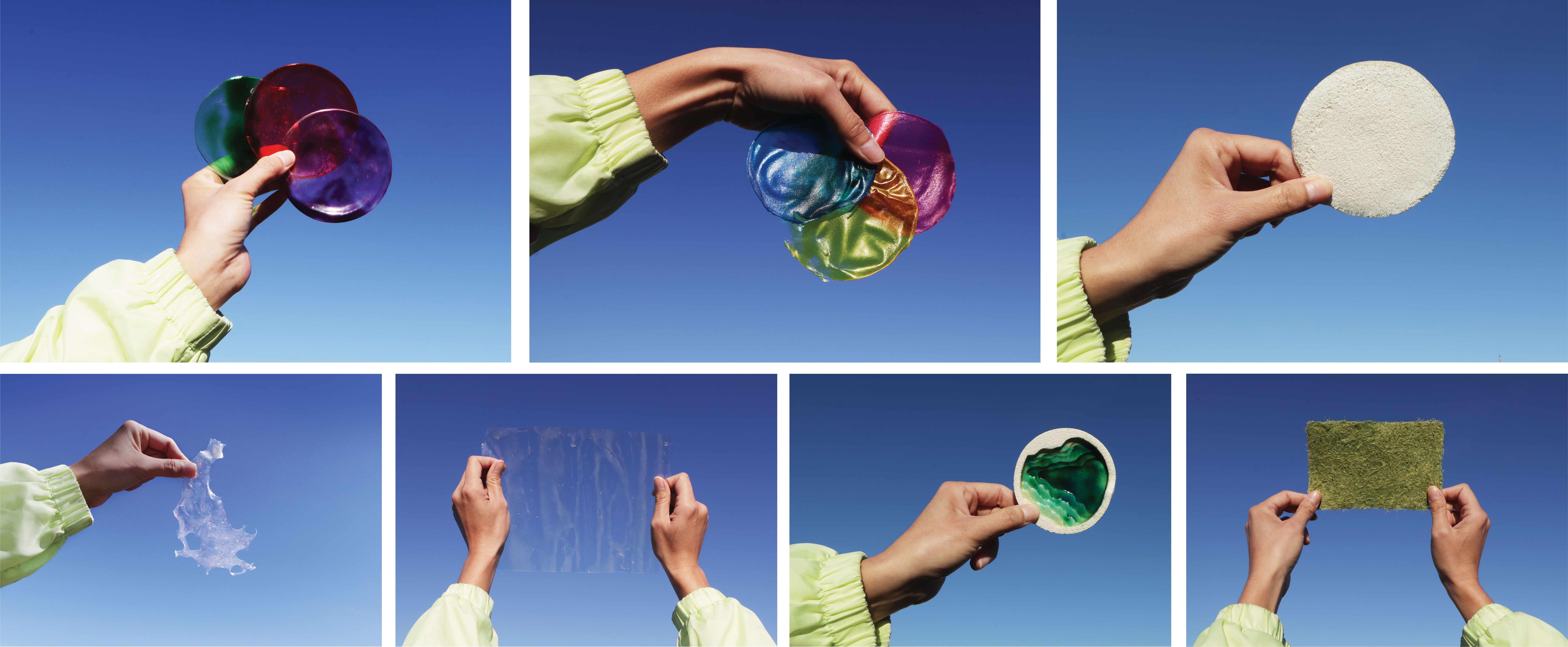
Final Bio-Material Images
Bottle Designs
I developed ocean-inspired bottle structures to elevate the feel of luxury and expression of the brand while also maintaining the silhouettes of the original bottle designs. As proof of concept, I extracted part of the bottle front and reproduced it using the chosen recipes.
The Molds
From 3D printed positive resin molds to negative silicone molds, used to pour a mixture of eggshells, gelatin, glycerol, and salt, used to create the main structure of the bottle. The second pour of gelatine with natural dyes was applied to the crevices and debossed logotype of the eggshell mold.
Final Bottle Designs
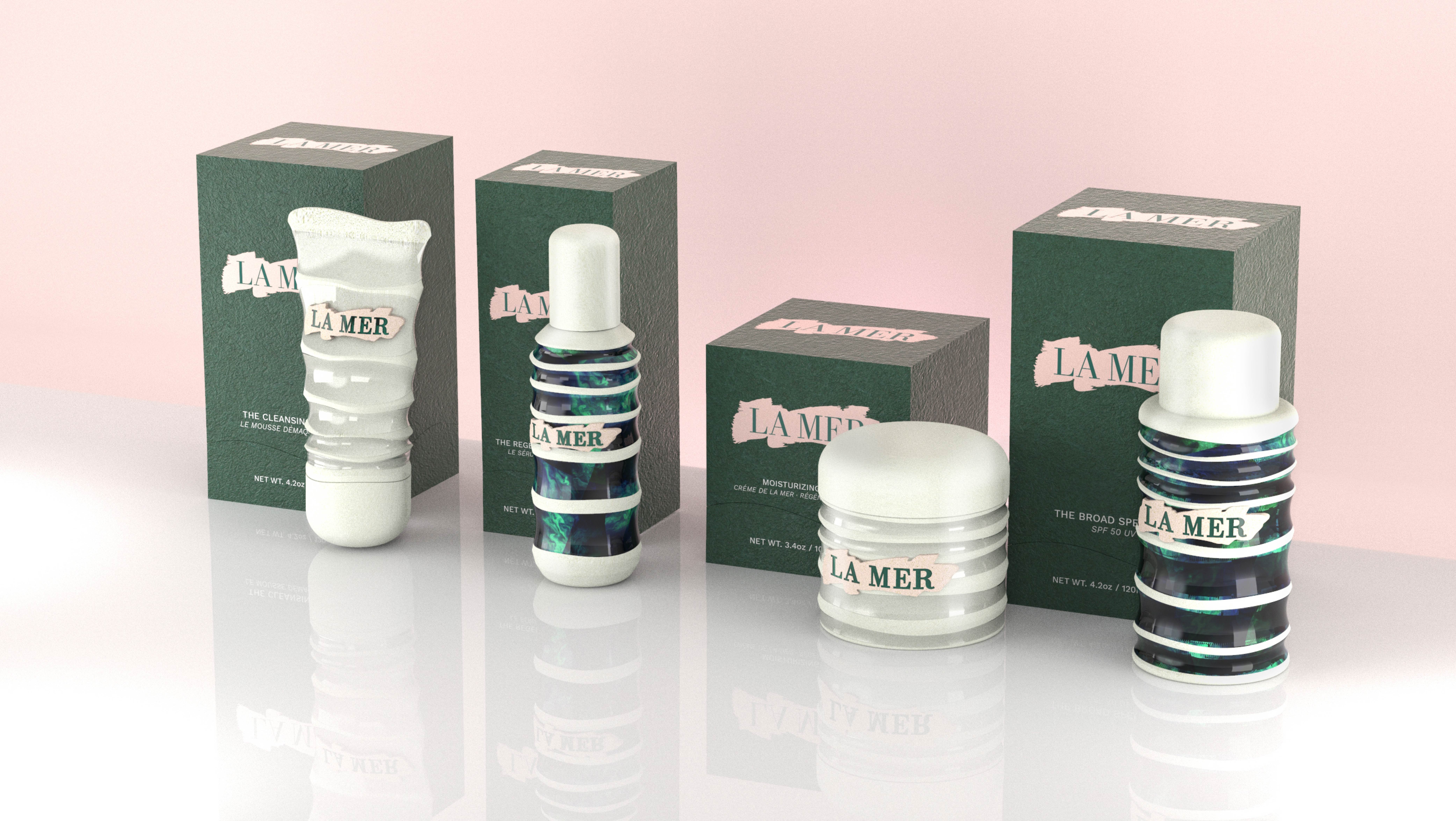
Primary and Secondary Packaging
The secondary packaging was produced with a combination of Kappa Carrageenan and grass paper.